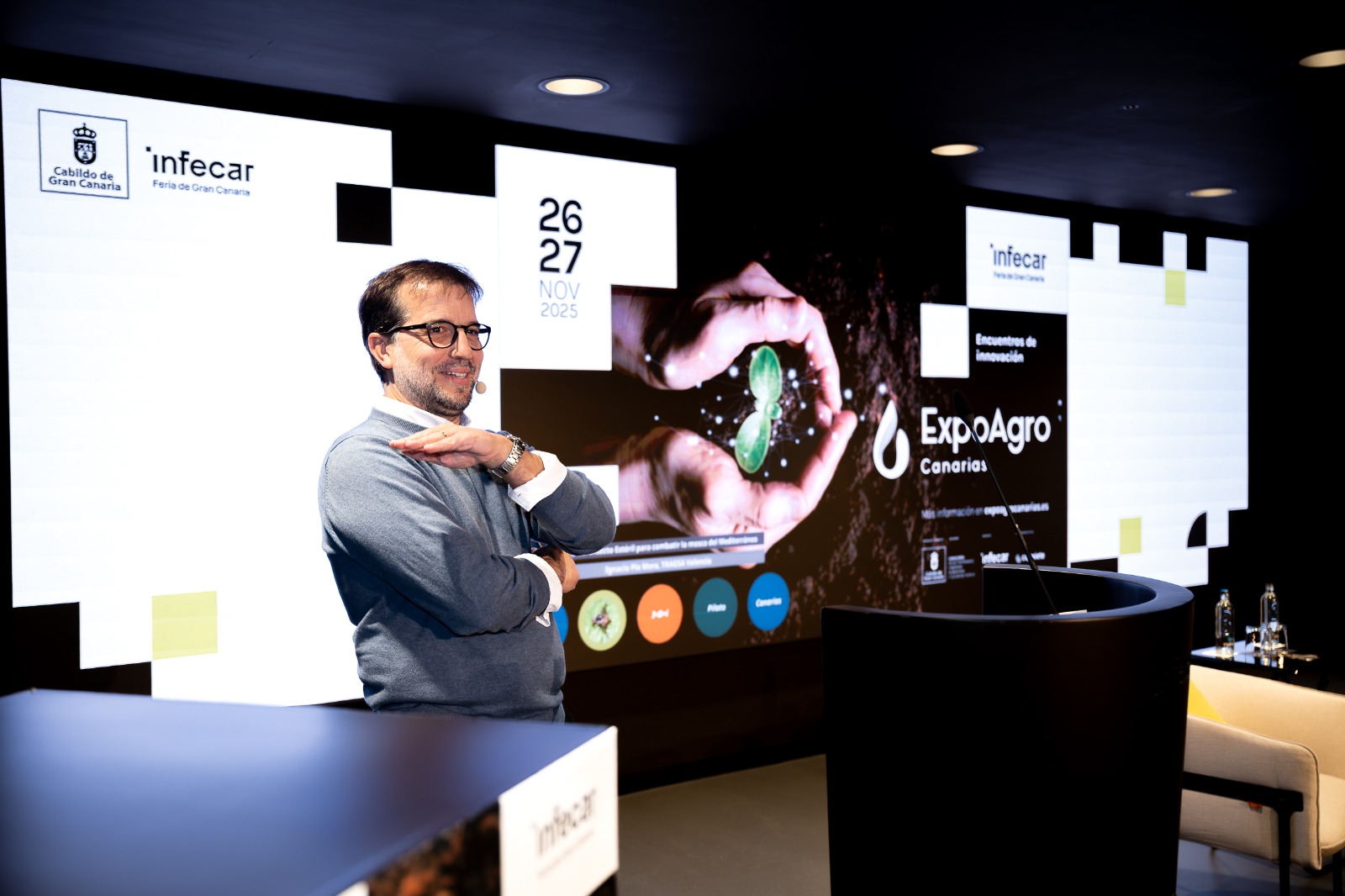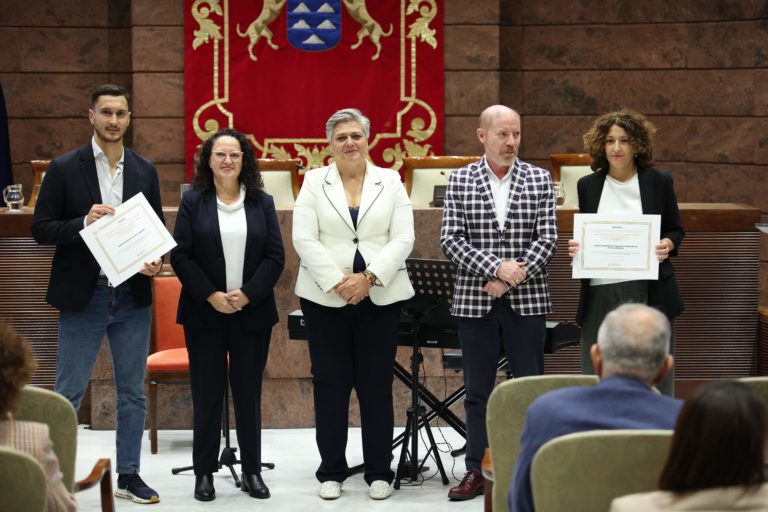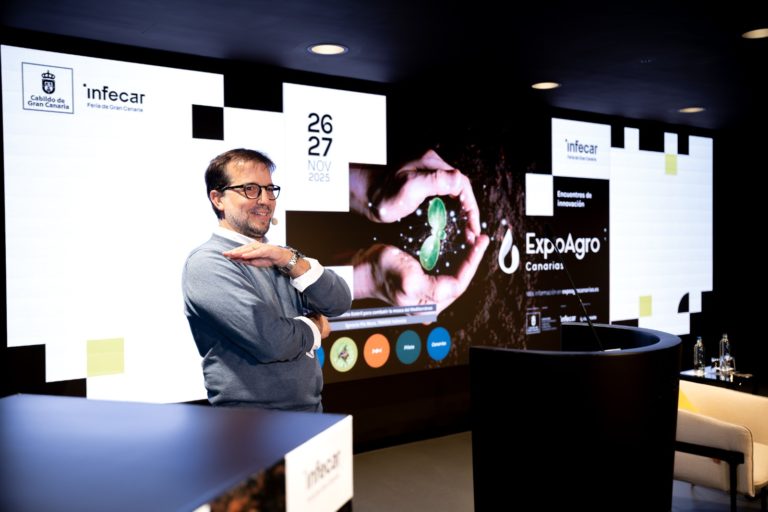- The Innovation Forum on Urban Arboriculture Management highlighted the importance of long-term planning for the green areas of cities
The second day of ExpoAgro Canarias delved into the potential of agrivoltaics as a pairing between agricultural production and energy generation in the Canary Islands, as well as the latest techniques for crop protection.
Ignacio Plá Mora, Technical Manager for Pest Management Actions and Projects at TRAGSA Valencia and a global reference in the Sterile Insect Technique (SIT), explained how this method works: males are captured, sterilised through irradiation, and then released into the field to mate with females. “And because the males are sterile, the females will not produce offspring; over several generations, the pest level affecting the field is reduced.” In short, he explained, “we use the same pest to fight the pest — the essence of the sterile insect technique is to breed insects of the very species you want to control.”
The second of today’s blocks at ExpoAgro Canarias focused on the potential of agrivoltaics, which “allows agriculture to be combined — always prioritising agricultural yield — with energy production that farmers can use to reduce or offset their energy consumption,” explained M.ª Elena Llarena, coordinator of the Photovoltaics Department at the Institute of Technology and Renewable Energies (ITER).
The chemical engineer presented the Tagora initiative as an example — a pilot agrivoltaic project currently in the preliminary design phase on a farm in northern Tenerife. It provides data to monitor both the agricultural performance and the electrical output of the photovoltaic installation. These data will “help lay the foundations for agrivoltaic installations in the Canary Islands.”
Projects like this are increasingly being promoted, especially at European and national levels, but not yet in the Canary Islands “because we have unique territorial conditions — special water characteristics, a soil protection law, many protected natural areas that must continue to be safeguarded, and a more traditional agriculture with less heavy machinery,” Llarena explained, advocating for “adapting regulations to our particular characteristics.”
In addition to María Elena Llarena, Pedro José Fernández, CEO of Metal Frame Renovables, also discussed agrivoltaics, presenting several agrivoltaic business models for island contexts. Meanwhile, Luis Cárdenes, Director of Water and Energy at Grupo FSM, presented the FSM Construcción case of agrivoltaic integration in agricultural holdings, and Tatiana Gómez, engineer at the Island Energy Council of Gran Canaria (CIEGC), together with Daniel Henríquez, Head of the Renewable Energies Department at the Canary Islands Institute of Technology (ITC), gave an overview of agrivoltaic pilot projects currently underway in Gran Canaria.
The need to plan urban green areas
The second day of the Innovation Forum on Urban Arboriculture Management, held within the framework of ExpoAgro Canarias, opened with a presentation by José Luis Rodríguez Gamo, green infrastructure consultant and regional dean of the College of Forestry Engineers of Madrid, who spoke about the positive impact of urban forests on health: “they are the mesh that gives life to the city — the basic life-support infrastructure that provides citizens with concrete functionality, wellbeing and health.” For this reason, he stated, “we cannot think only in terms of a park or a green ring; we must think about full long-term planning.”
Francisco León, technical coordinator of maintenance, improvement and expansion of green areas, trees and irrigation at the Viera y Clavijo Botanical Garden, explained the work carried out in this emblematic city park. He referred specifically to the intervention in the Matías Vega palm square, which in just a few months has regenerated its 236 palm trees, their surroundings and the soil where they grow.



